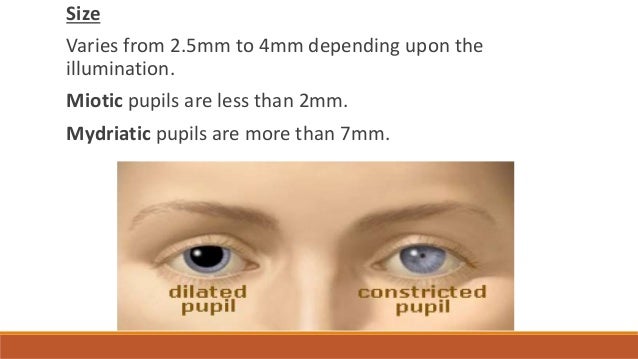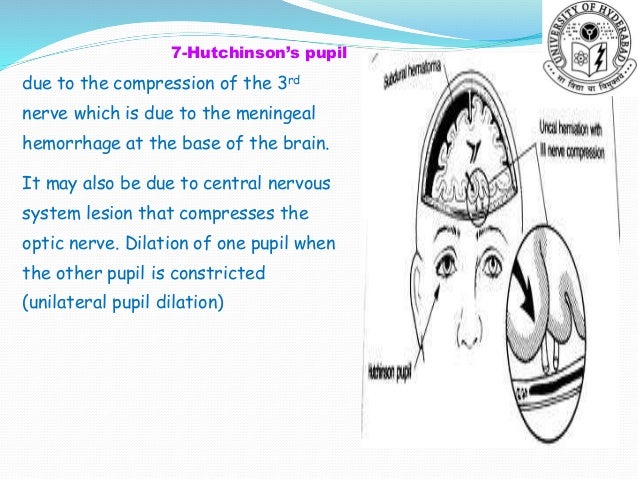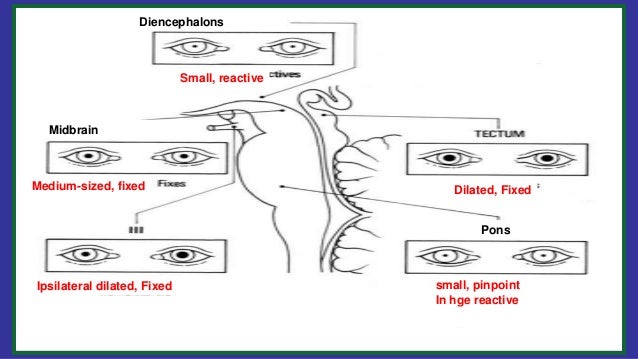
This flicking between the left eye abducting and correcting results in a lateral nystagmus. Nystagmus occurs since the brain, noticing that gaze is divergent due to the impaired adduction of the right eye, tried to correct the gaze of the abducted left eye back toward the nose.The abducting eye (in this case the left) will also show signs of nystagmus.A patient with a MLF lesion when asked to look to the left will be able abduct their left eye but will have impaired adduction of their right eye as the connection between the left VIth nerve nucleus (left lateral rectus) and the right IIIrd nerve nucleus (medial rectus) is not functioning.Nystagmus in the abducting contralateral eye.Impaired adduction of the ipsilateral eye.Eyes do not move together – dissociative conjugate movements.Diplopia is experienced as parallel images and is greatest when looking towards the affected side.Due to the long course of the 6th nerve it is easily affected, for example in patients with raised intracerebral pressure.


Diplopia, experienced as images at an angle (angulated diplopia), is worst when looking down and in.On inspection of the patient the affected eye will be slightly raised compared to the unaffected eye.A 4th nerve palsy results in the patient being unable to look down and in, towards their nose, making reading especially difficult.LR6 = Lateral rectus is supplied by Abducens (6th).SO 4 = Superior oblique is supplied by Trochlear nerve (4th).Third order neurone damage results in sweating being unaffected since the sympathetic fibres supplying the face branch off prior to the superior cervical ganglion.Locating the lesion is dependent on identifying the pattern of anhidrosis: The ganglion is the superior cervical ganglion. Central lesions affect the First order neurones and Peripheral lesions are those which affect the Second (pre-ganglionic) and Third (post ganglionic) order neurones.Third order neurone: Superior cervical ganglion → Muller muscles + pupil + sweat glands.Second order neurone: T1 root ganglion → cervical sympathetic chain → superior cervical ganglion.First order neurone: Hypothalamus → Brainstem → Cervical Cord à T1 root ganglion.Sympathetic supply to the face is composed of the connection of three separate neurons: Presentation of Horner’s is dependent on the site of the lesion due to the anatomy of the sympathetic supply to the face.IIIrd nerve palsies and Myaesthenia gravis are two important differentials of Horner’s syndrome to exclude.Interestingly, voluntary upward gaze overcomes the partial ptosis. In Horner’s syndrome, despite the weakness owing to a dysfunctional Muller muscle, the IIIrd nerve is still intact meaning the ptosis is not complete.In Horner’s syndrome there is only partial ptosis since control of the upper eyelid is controlled by two sets of nerves: the IIIrd nerve supplies the levator palpebrae superioris and sympathetic fibres supply the Muller muscle.



 0 kommentar(er)
0 kommentar(er)
